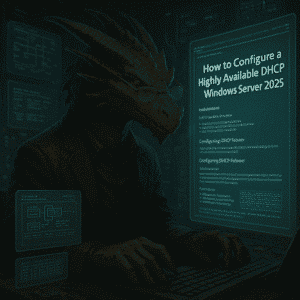When creating an Active Directory structure it is good to develop the Active Directory design with a focus for efficient management, delegation of administrative tasks, and application of Group Policies (GPOs). This can be done using a strcuture based on continent, country, and role (e.g., users, servers).
Below is a recommended Active Directory design based on my experiences.
Table of Contents
Top-Level Active Directory Design Considerations:
Continent/Region-Based OUs: This allows for easy delegation of administrative control by region. It is not unusual that you have different MSPs or Teams in charge of specific continents or regions. Depending on your organization you might want to use Europe, North America, Asia or you want to add additional regions for India, China, EMEA (Europe, Middle East, Africa).
Country-Based Sub-OUs: Countries within each continent are separated into their own OUs for further delegation and policy application. Examples to use this are workers council requirements, data privacy configurations or compliance requirements.
Role-Based OUs: Within each country, separate OUs for users, servers, and other resources (e.g., workstations) are created. We want to seperate Group Policies for computer and user based components and this seperation is a basic approach for it. It also allows to create login scripts or delegate user administration from server and client object administration.
Server Version OUs: Servers should be further segregated by their operating system version for easier management of updates and group policies. This will become very important, when we start working with Windows Server 2025 Baseline configuration in the next part of this series.
Below is an example structure. Remember that the final Active Directory design depends on your organization size and structure. If you see Active Directories from multiple organizations you will notice, that the difference in the designs is normally in Layer 1 and 2, but you will always see the Users and Servers structure.
|-- Europe
| |-- Germany
| | |-- Users
| | |-- Servers
| | |-- Server2019
| | |-- Server2022
| | |-- Server2025
| |
| |-- France
| | |-- Users
| | |-- Servers
| | |-- Server2022
| | |-- Server2025
| |
|-- North America
| |-- USA
| | |-- Users
| | |-- Servers
| | |-- Server2022
| | |-- Server2025
| |
| |-- Canada
| |-- Users
| |-- Servers
| |-- Server2025
|
Benefits of This Structure:
Security Boundaries: By separating users and servers into different OUs, you can apply different security policies tailored to each group.
Delegated Administration: Administrators can be assigned permissions at the continent or country level without affecting other regions.
Simplified Group Policy Management: GPOs can be applied at various levels (continent, country, operating system version) to ensure consistent configurations across similar resources.
Scalability: The structure is scalable as new countries or regions can easily be added without disrupting the existing hierarchy.
Example Use Cases:
Delegating Control in Germany:
- You can delegate control of the
Europe\GermanyOU to a local administrator in Germany, allowing them to manage users and servers within that country without affecting other countries in Europe.
Applying Policies to All Servers Running Windows Server 2025:
- You can apply a GPO specifically to
Europe\Germany\Servers\Windows2025 to enforce server-specific policies such as patching schedules or security baselines.
Applying Continent-Wide Policies:
- A GPO applied at the
Europelevel could enforce certain security settings across all European countries, ensuring consistency across the entire region.
Additional Considerations for Active Directory Design:
- Hybrid Structures: Depending on your organization’s needs, you may want to combine location-based OUs with department-based OUs (e.g.,
Europe\Germany\Finance\Users). - Group Policy Inheritance: Be mindful of how GPO inheritance works in this hierarchical structure. Avoid blocking inheritance and filters wherever you can. Use Item Level Targeting with Group Policy Preferences, but avoid WMI Filters for performance reasons.
Powershell Script to create a structure
The following Script will create some example OUs for Europe and North America based on my recommend structure for the home lab and Active Directory in general. You can easily adjust the $domain path and add additional continents, countries and other OUs.
# Import Active Directory module
Import-Module ActiveDirectory
# Define the root domain for the OUs
$domain = "DC=ad,DC=hartiga,DC=de"
# Function to create an Organizational Unit if it doesn't already exist
function Create-OU {
param (
[string]$ouName,
[string]$parentOU
)
# Construct the full distinguished name for the new OU
$ouPath = "OU=$ouName,$parentOU"
# Check if the OU already exists
if (-not (Get-ADOrganizationalUnit -Filter {DistinguishedName -eq $ouPath} -ErrorAction SilentlyContinue)) {
# Create the OU if it doesn't exist
New-ADOrganizationalUnit -Name $ouName -Path $parentOU
Write-Host "Created OU: $ouName under $parentOU"
} else {
Write-Host "OU: $ouName already exists under $parentOU"
}
}
# Start creating the OU structure
# Europe OUs
$europeOU = "OU=Europe,$domain"
Create-OU "Europe" $domain
# Germany OUs
$germanyOU = "OU=Germany,$europeOU"
Create-OU "Germany" $europeOU
Create-OU "Users" $germanyOU
Create-OU "Servers" $germanyOU
# Germany Servers Sub-OUs
$germanyServersOU = "OU=Servers,$germanyOU"
Create-OU "Server2019" $germanyServersOU
Create-OU "Server2022" $germanyServersOU
Create-OU "Server2025" $germanyServersOU
# France OUs
$franceOU = "OU=France,$europeOU"
Create-OU "France" $europeOU
Create-OU "Users" $franceOU
Create-OU "Servers" $franceOU
# France Servers Sub-OUs
$franceServersOU = "OU=Servers,$franceOU"
Create-OU "Server2022" $franceServersOU
Create-OU "Server2025" $franceServersOU
# North America OUs
$northAmericaOU = "OU=North America,$domain"
Create-OU "North America" $domain
# USA OUs
$usaOU = "OU=USA,$northAmericaOU"
Create-OU "USA" $northAmericaOU
Create-OU "Users" $usaOU
Create-OU "Servers" $usaOU
# USA Servers Sub-OUs
$usaServersOU = "OU=Servers,$usaOU"
Create-OU "Server2022" $usaServersOU
Create-OU "Server2025" $usaServersOU
# Canada OUs
$canadaOU = "OU=Canada,$northAmericaOU"
Create-OU "Canada" $northAmericaOU
Create-OU "Users" $canadaOU
Create-OU "Servers" $canadaOU
# Canada Servers Sub-OUs
$canadaServersOU = "OU=Servers,$canadaOU"
Create-OU "Server2025" $canadaServersOUThis Active Directory design provides a flexible and scalable foundation for managing users, servers, and other resources across multiple regions and countries within Active Directory.
Layout in Active Directory Users and Computers

If you need to install the Active Directory, please check the guide here.
What are common design pitfalls in Active Directory?
This is just a summary and I recommend to create a checklist to make sure, that you have those Top 10 issues covered.
1. Overcomplicating the Domain Structure
- Designing too many domains or forests can lead to unnecessary complexity, higher administrative overhead, and potential trust issues. Stick to a simple structure unless a compelling business need dictates otherwise.
2. Lack of Proper Organizational Unit (OU) Design
- A poorly planned OU structure can make it difficult to manage policies and permissions. Avoid mixing user accounts, computers, and administrative accounts in the same OUs to prevent misconfigurations.
3. Neglecting DNS Integration
- Since AD heavily depends on DNS, failing to properly configure DNS servers or overlooking redundancy can cause authentication and resource-location problems across the network.
4. Ignoring Group Policy Management
- Creating too many Group Policy Objects (GPOs) or applying conflicting GPOs can result in unnecessary complexity and troubleshooting nightmares. Ensure policies are well-documented, consistent, and aligned with business requirements.
5. Inadequate Security Measures
- Using default or weak passwords for service accounts, failing to disable unused accounts, or granting excessive permissions can expose the environment to security risks.
6. Improper Delegation of Authority
- Granting excessive administrative rights instead of delegating specific tasks can lead to accidental misconfigurations or potential misuse by administrators.
7. Underestimating Replication and Site Topology
- Neglecting to account for site links and replication schedules can lead to inefficient use of network bandwidth, especially in multi-site environments.
8. Failure to Plan for Scalability
- Designing a structure that meets only current needs, without considering future growth, can require a complete redesign when the organization expands.
9. Overlooking Backup and Recovery
- Not implementing a robust backup and recovery plan for AD data, system state, and GPOs can lead to prolonged outages in case of a failure.
10. Inadequate Auditing and Monitoring
- Failing to enable proper auditing or neglecting to monitor AD health and changes can make it difficult to identify potential security breaches or operational issues.
Avoiding these pitfalls is key to ensuring a secure, scalable, and well-managed Active Directory environment.
Conclusion
Designing an effective Active Directory structure requires a thoughtful approach that prioritizes efficient management, delegation of administrative tasks, and consistent application of Group Policies (GPOs). By organizing your structure based on continents, countries, and roles, as well as considering operating system-specific needs, you can create a scalable and secure environment tailored to your organization.
The recommended design outlined above offers clear benefits, including streamlined administration, robust security boundaries, and flexibility for future growth. By implementing a logical OU hierarchy, leveraging best practices, and proactively avoiding common pitfalls like overcomplicating domain structures or neglecting DNS integration, you’ll establish a strong foundation for managing your AD infrastructure.
Remember, Active Directory design is not a one-time task—it’s a process that evolves with your organization’s needs. Regular reviews, updates, and a clear strategy will ensure that your AD remains robust and adaptable, empowering your IT team and supporting organizational success for years to come.






